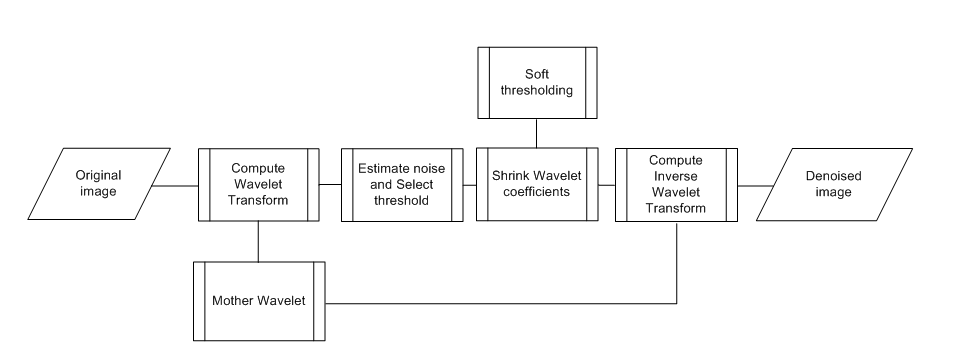Kovesi Image Denoising
This operator uses the Kovesi wavelet denoising image processing algorithm to remove unwanted noise in a ping. Settings for the algorithm may be specified on the Kovesi image denoising page of the Variable Properties dialog box. The Kovesi algorithm doesn't distort data, it preserves image detail and is suited to data from imaging sonars.
The operator accepts a single variable of the following types as input:
- Multibeam magnitude
- Multibeam Sv
- Multibeam TS
- Multibeam unspecified dB
Notes:
- Data from imaging sonars may also benefit from the Multibeam background removal operator.
- The Kovesi algorithm works best (produces a smoother image) with variables that have no data thresholds.
- The Kovesi computations are complex and may take some time. To reduce computation time, reduce the number of samples.
- Kovesi image denoising may highlight acoustic shadowing in imaging sonar data.
- -999dB and no_data input samples become no_data samples in the output.
- Read the Data thresholding section on Noise, background object and signal removal in Echoview.
Settings
The Kovesi Image Denoising Variable Properties dialog box pages include (common) Variable Properties pages and these operator pages:
Operands page
Kovesi image denoising
|
Setting |
Description |
|
Minimum wavelength |
Wavelength of the smallest scale filter. Available Minimum wavelengths are in the range 1.00 to 8.00. Increasing the Minimum wavelength softens the image. |
|
Softness |
Softness specifies the degree of soft thresholding. Available Softness values are in the range 0.00 to 1.00. A value of zero produces a hard image. |
|
Standard deviations to reject |
Std deviations to reject specifies the number of standard deviations of noise to reject in relation to an ideal wave shape. Available values are in the range 1.00 to 6.00. Lower values approach an ideal wave shape. |
Algorithm
Kovesi image denoising algorithms have been adapted for use in Echoview with multibeam imaging sonar data from a MATLAB script copyrighted by Peter Kovesi. The algorithm doesn't distort data and it preserves image detail.
Background
Kovesi's MATLAB script cites "Phase Preserving Denoising of Images" (Kovesi 1999). Kovesi's online summary for the code states "This code differs from standard wavelet denoising techniques in that it uses non-orthogonal wavelets, and unlike existing techniques, ensures that phase information is preserved in the image. Phase information is of crucial importance to human visual perception. Also, this code does have an effective way of determining threshold levels automatically."
Generally, wavelet denoising reduces high frequency noise and retains the original signal. The following flow chart is derived from a Wavelet denoising description from the Tel Aviv University School of Mathematical Sciences.

Algorithms
The Kovesi filter algorithms used by Echoview are detailed in NOISECOMP. Only three algorithm parameters may be specified, all other parameters are fixed. The raw output from the Kovesi filter is scaleless. It is rescaled to match the output maximum to the input maximum. The algorithm iterates a filter over the data at a number of different scales, starting with the smallest. Each scale is defined by the wavelet wavelength. Echoview uses 6 scales and a factor of 2.5 between the wavelengths at successive scales.
|
Echoview setting |
NOISECOMP equivalent |
Flow chart equivalent |
Note: Echoview uses a value of four for the Number of orientations. The NOISECOMP equivalent defaults to a value of six.
|
"minWaveLength" parameter. Wavelength of the smallest scale filter. The algorithm uses a filter that is run at a number of scales.
|
Possibly used at the Estimate noise and Select threshold stage or the Shrink wavelet coefficients stage. |
|
|
"softness" parameter. The degree of soft thresholding (0-hard 1-soft). |
Used at the Soft thresholding stage. |
|
The operator offers a range of values 0.00 to 6.00. |
"k" parameter. The number of standard deviations of noise to reject 2-3. |
Possibly used at the Estimate noise and Select threshold stage or the Shrink wavelet coefficients stage. |